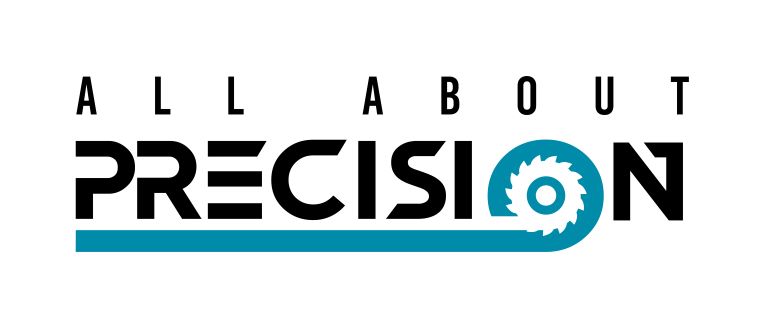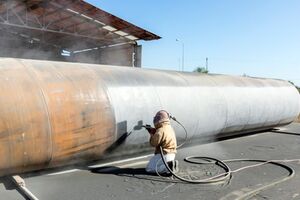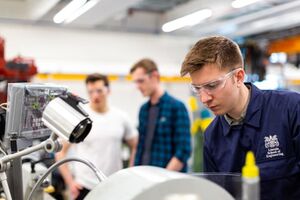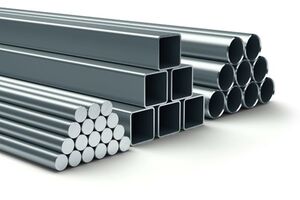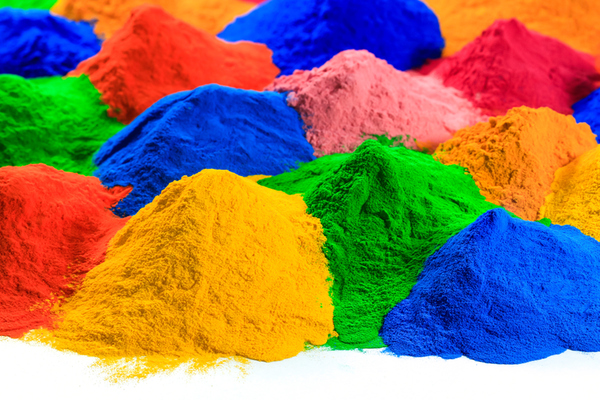
Introduction
Powder coating is an environmentally friendly coating that offers exceptional versatility and opportunities for both applicators' and end users to reduce costs and break into new markets.
Market analysis in recent years has shown steady and consistent growth in both market share of finishing processes and in terms of overall market value.
This steady increase was expected to continue, however the Coronavirus pandemic will undoubtedly at the very least slow the increase if not put it into a temporary decline.
Powder coating is a dry finishing process, there are no solvents involved. The powder is applied in it's dry state in several different ways which we will explore in this article.
The vast majority of components that are coated are metallic, coating of non-metallic parts such as glass and wood are on the increase however.
We will cover the following in this article:
- History of Powder Coating.
- Powder coating methods.
- Types of powders available.
- How the powders are manufactured.
- Advantages and disadvantages of powder coating.
- Health and safety considerations for both employees/applicators and employers.
History of Powder Coating
The origins of powder coating go all the way back to the mid 1940's where organic polymers were first flame sprayed onto components.
Around the same time, a US patent (2538562) was filed by D.S Gustin and A.W Wainio for the electrostatic application of polymer powders.
Powder coating really began to gain traction after the invention of the fluidised bed method by German scientist Dr Erwin Gemmer. He patented his invention in 1957 in the US (3063860).
The development of the electrostatic spray gun by Pieter de Lange set the stage for the two most popular application methods used today.
Below are links to the original patents filed by D.S Gustin, A.W Wainio and Dr Ervin Gemmer.
Powder Coating Methods
There are two main application methods for powder coating. These are electrostatic spray deposition (also known as ESD) and fluidised bed (also known as dipping).
Within these groups there are different ways in which the application process can be achieved and we will look into these in further detail in this section.
Electrostatic Spray Deposition
There are two common spray guns used for powder coating, these are corona charging spray guns and tribo charging spray guns.
All powders can be used with the corona charging gun but some are not suitable for a tribo charging gun
The spray pattern size, shape and density can be controlled via the fitment of different nozzles.
As a minimum, spray application requires a spray gun, spray booth, compressed air supply and curing oven. It is also recommended to have a moisture filter fitted to the compressed air supply hose as it enters the gun.
A third less common spray gun is the rotary bell spray gun.
- Corona Charging Spray Gun
- High voltage, low amperage power supplied to an electrode that is positioned near the exit of the nozzle on the gun.
- The powder is moved from the storage hopper which is usually mounted on the gun, out through the nozzle by compressed air. The hopper also sometimes has the ability to vibrate to help the powder exit and prevent clumping.
- As the powder exits the nozzle it travels through an ionised electrostatic field which had been created between the workpiece and electrode by the high voltage supply to the electrode. This results in the powder becoming negatively charged.
- The negatively charged particles are attracted to the grounded part and form the coating.
The following short video provides a valuable overview of the process:
PRO'S |
| No consumable parts on the gun. |
Easy to clean and quick to change powder type or colour being used. |
Compatible with virtually all powder types. |
| The ability to vary the voltage being used enables the user to have more control over the coating thickness. |
| The creation of the electrostatic field between the component being coated and the electrode rapidly charges the powder coating and also helps in transportation and deposition. |
CON'S |
Powder application into recesses can suffer from issues with the Faraday Effect. Voltage variation can help reduce this effect. |
The video below outlines how the faraday cage effect that can be lessened to ensure high quality final coatings in recesses.
- Tribo Charging Spray Gun
- Powder is moved from the storage hopper mounted on the gun and is forced through the gun nozzle at high speed. The hopper also sometimes has the ability to vibrate to help the powder exit and prevent clumping.
- Within the gun there is an insulator material that positively charges the powder particles via friction as the particles pass over it.
- The positively charged particles are attracted to the grounded part and form the coating.
PRO'S |
No risk of Faraday Cage Effect issues occurring. |
No high voltage required. |
| As no electrostatic filed between component and spray gun is created, components being coated can be placed closer together. |
| Highly suitable for automation. |
CON'S |
Tribo gun requires dismantling for cleaning. |
Conductor part is a consumable. |
Not compatible with all powders. |
| More stringent requirements for compressed air supply in terms of cleanliness and humidity. |
| Limits on particle size. Particle size smaller than 10 microns are more difficult to charge successfully. |
- Rotary Bell Spray Gun
- Designed exclusively for automation and currently used mainly in the automotive industry.
- The powder is fed into the bell via compressed air where a turbine mounted within the bell spins at high speed which forces the powder out in a circular cloud like pattern.
- The bell is connected to a high voltage supply which charges the powder in the same way as the corona charging spray guns.
Fluidised Bed
There are two types of fluidised bed application methods. The first is simply know as fluidised bed, the second is electrostatic fluidised bed.
Both methods use a large hopper with a porous membrane bottom to contain the powder. The powder is then 'fluidised' by compressed air which is continuously pumped up through the membrane.
The fluidised bed method requires the part to be pre-heated to around 450-500°F before it is dipped into the powder bed. Once dipped in, the powder contacts the hot surface of the component and melts, forming a thick coating. It is common for the coated component to be put in a curing oven after coating to complete the curing process.
The electrostatic fluidised bed method, just like the electrostatic spray deposition applications, requires the part being coated to be grounded before being dipped into the charged power. The powder is charged with the use of high voltage just like the corona charging gun.
The short video below shows the standard fluidised bed process:
PRO'S |
Can achieve high coating thickness of around 200-250 microns. |
Lower set-up costs. |
CON'S |
Larger volumes of powder required so not as economical for small patches, especially is a highly bespoke/specialist powder is being used. |
Part pre-heating required if not using the electrostatic process. |
No suitable for thin coatings. |
| Additional beds will be required for different powder types and colours as it is not practical to empty the bed. |
| Thin preheated parts will lose their heat quickly and may result in the coating process not working or diminished quality of the finished part. |
Types of Powder
The different powders used fall into one of two groups. These are thermosetting and thermoplastic.
In this section we will look at the basic difference between the two groups and review some of the different powders available under each.
Thermosetting Powders
When thermosetting powders are cured, a chemical reaction occurs resulting in cross-linking, this process results in physical property changes and is non-reversible.
When thermoset coatings are subjected to head they will not melt.
- Epoxies
- Hard and impact resistant coating.
- Gives a smooth and uniform finish.
- Provides excellent Corrosion protection.
- Good adhesion.
- Mainly used for components intended for use indoors.
- Long term exposure to UV results in the formation of a chalk like appearance (loss of gloss).
- Good chemical resistance.
- Polyester's
- Weather and UV resistant so suitable for exterior use,
- Good colour and gloss retention.
- Extremely durable.
- Good adhesion pr0perties.
- Lower chemical resistance compared to other powder coats.
- Used on items such as garden furniture, fencing and exterior decorative components.
- Epoxy-Polyesters (also known as hybrids)
- As the title suggests, they powders are a blend of epoxy and polyester based powders.
- Blends can consist of different ratio's of each base powder, to emphasise a particular set of characteristics depending of the end use of the component being coated.
- Best all round performance
- Similar properties to epoxies but with improved weatherability characteristics.
- One of the most popular powders in use.
- Polyurethanes
- Excellent weatherability characteristics.
- Provides excellent corrosion protection to component.
- Resistant to a wide variety of chemicals and oils and also performs well in humid conditions.
- Use for both exterior and interiors components.
- Is both a functional and decorative finish.
- Acrylics
- High gloss and smooth appearance.
- Often used in the application of clear coats as can be supplied in both clear and transparent finishes.
- More resistant to UV than epoxies.
- Fluoropolymers
- Can be classified as either a thermoset or thermoplastic depending on the exact make-up of the powder.
- The two most popular fluoropolymers for powder coating are FEVE (fluoroethylene vinyl ether) which is a thermoset and PVDF (polyvinylidene difluoride) which is a thermoplastic.
- FEVE is especially favoured for it's performance as a single coat, whereas PVDF coatings require a primer.
- Excellent weatherability properties.
- Retains it's glossy finish.
- Extensive use in architecture for exterior exposed parts.
Thermoplastic Powders
When thermoplastic powder coats are cured, they melt mix and flow to produce a smooth uniform finish.
Unlike thermosetting powder coats, if thermoplastic powder coats are exposed to high temperatures, the will melt and can be formed multiple times.
- PVC's (polyvinyl chloride)
- Durable and pliable finish.
- Can be produced in food contact grades.
- Has good electrical resistance.
- Polyolefin's
- Produces a smooth finish.
- Good choice for components that are cleaned on a regular basis due to its excellent resistance to abrasives and chemicals.
- Excellent adhesion properties.
- Nylon's
- Used as a protective coating.
- Protects against both impacts and abrasions.
- Resistant to a wide variety of chemicals and oils.
- Normally used with a primer.
- Can be produced in food contact grades.
- Often used on gears and conveyor components due to it's low coefficient of friction.
- Also a popular choice for use in marine environments.
Manufacture of Powders for Powder Coating
The manufacture of the powders used for powder coating is a relatively quick and easy process. In this section we will look at the ingredients that make up a powder blend and the process in which the end product is achieved.
Powder Blend Ingredients
A powder blend contains several different ingredients such as but not limited to the following:
- polymer resin
- pigments
- flow modifiers
- levelling agents
- curatives
Other additives such as metallic particles can also be added depending on what the powder recipe calls for. Metallic particles can add a decorative finish to the power while also increasing the coats durability and strength.
Powder Manufacturing Process
Once the ingredients for the particular coating have been identified and procured, the following steps are performed to create the final powder blend:
- Weigh out of all the required ingredients.
- Place all ingredients in the specified quantity into an industrial mixer and mix until all the ingredients are thoroughly mixed.
- Heat the blend and continue to mix and knead it.
- Extrude the melted mixture and roll it into a flat sheet.
- Allow the rolled sheet to cool before breaking the sheet into pieces of between 5mm and 10mm.
- Grind the 5mm to 10mm pieces into particles of around 40 microns.
- Sieve the ground material, returning any oversize particles back to the grinder and removing undersized particles.
- Package up finished powder in preparation for shipping.
The video below provides a very good example of the manufacturing process.
Advantages of Powder Coating
- Environmentally Friendly
- Unlike other coatings such as paint, the powders used contain no solvents so there is a negligible if any at all, release of volatile organic compounds, more commonly known as VOC'S.
- Any powder spills can be easily cleaned up with simple and low cost equipment such as brushes and industrial vacuums.
- The ease in which spills or unused powder can be cleaned up negates the need for any expensive pollution control equipment, and all the maintenance issues that come along with it.
- The process of powder coating produces minimal waste. Assuming the spray booth is clean and well maintained, unused powder can be collected and re-used.
- Cleaner Process Than Wet Paints
- With the ability to clean up and re-use the left of powder, the spray booth or coating bed area can be kept clean, whereas a wet paint booth will very quickly become messy as it isn't practical or cost effective to clean it to remove all the spilt paint before it dries.
- Equipment can also be cleaned relatively quickly and easily, and with the spray method, if cleaning is delayed for any reason, there is no risk to nozzles and lines being blocked.
- Cleaning can be done with soapy water, no specialist cleaning equipment or procedures are required. With wet paints however, the operator has to ensure cleaning is done in a timely manner to ensure the paint doesn't begin to harden.
- Hazards to Operators are Reduced
- Although the operator will still require PPE, the risks to personnel compared to other processes are reduced, in no small part due to the near absence of VOC's.
- If the operator gets powder on their skin, it can be easily and quickly washed off with the use of warm water, whereas with wet paints, solvents and other specialist cleaning product may be required.
- There are normally no adverse effects from the powder coming into contact with skin. The main issues from contact are with allergic reaction's.
- Durability
- A professionally applied powder coat provides immense long lasting benefits in terms of corrosion protection, appearance and overall durability.
- The coating will be resistant to wear, scratching, chipping and fading, meaning parts will look like new for longer.
- One area that powder coating excels in, is when it is used in vibrating parts. The semi flexible nature of the coating makes it an ideal choice.
- Process Efficiency
- Only one coat of powder is required. There is no need to apply several coats and wait for each of these coats to dry. The component can either be sent straight to the oven or set aside to cool down depending on what method has been used. (some powders do however require a primer to be applied to the components first.
- Complex parts can be coated with the operator applying as much or as little powder required to ensure full coverage.
- Hidden faces, hollows, curves and angles can all be relatively easily coated. If a wet paint was being applied instead, the component may have to be made in several pieces to ensure proper coverage.
- When using an electrostatic method, if a mistake is made, it is easy to start again with minimal downtime.
- High, Consistent Quality
- The melting of the powder coat results in a smooth, even finish. Thick coats do not increase the risk of dripping or runs, meaning that there is no additional finishing required once the coating has set.
- Huge Variety of Powder Coatings Available
- There is very little, if any other coating type that provides the variety of choice that powder coating gives.
- Coatings can be virtually any colour, including clear. They can also be produced in matt, glossy, iridescent and fluorescent.
- If a smooth and even coating is not desired, the powder blend can be customised to provide textured finishes such as hammered. This is especially useful for hiding any imperfections in the component being coated.
- Potential Cost Savings
- As mentioned previously, there is no need for specialist pollution control equipment such as air filtration as there is no solvent in the powder.
- The absence of solvent also means there is no need for powerful ventilation systems and equipment, saving maintenance costs and keeping heating costs to a minimum as there will be no constant loss of heat during coating application.
- Powders are relatively cheap when compared to specialist wet paints and are easy to store, taking up very little space.
- The efficiency of the process can help keep labour costs lows, both in low and high volume production scenarios. In addition, with the minimal amount of waste in the production in the process, it is very economical.
Disadvantages of Powder Coating
- Thin Layers Unachievable
- A coating thickness of less than 25 microns generally cannot be achieved.
- Colour Changes
- Unlike wet paints, where mixing can quickly produce different colours, the process is much more difficult when using powders.
- Component Material
- In general, powder coating can only be used on metallic components, with a view exceptions of non-metallic materials that are able to withstand the oven temperatures.
- Powder Baking
- The process requires the component being coated to either be baked in an oven or pre-heated before being dipped, thus limiting the size of components that can be coated.
- UV Resistance
- Certain powders are not UV resistant, so can only be used on components that are not exposed to the sun.
- Electrostatic Application
- The majority of the application methods require the component that is being coated to be grounded.
- Coating Touch-Up
- It is difficult to touch up a damaged area of coating.
Powder Coating Health and Safety
With all the appropriate procedures and safety controls in place, and properly trained applicators, powder coating is a low risk finishing process.
Main Powder Coating Risks
- Lung Irritation
- Exposure to the airborne powder particles can lead to irritation of the lungs as the powder particles can be sharp and rough.
- To mitigate this the operator should wear a dust mask or breathing apparatus depending on the powder application method being used.
- Another way to mitigate the risk of lung irritation is to use efficient powder recovery equipment as this will reduce the powder concentration in the air and the length of time that the powder is airborne.
- Eye and Skin Irritation
- With the array of possibly ingredients in powder coats, eye and skin allergic reactions are possible.
- This risk can be mitigated by the use of protective clothing and tight fitting safety goggles.
- Always consult the powders safety data sheet before using.
- Fire and Explosion
- Both airborne powder particles and excess deposited powder on the floor or booth internal surfaces are risk factors.
- It is imperative that sources of ignition are kept well away from powder coating operations. Possible ignition sources can be anything that can generate enough heat to ignite the dust and cause a subsequent fire or explosive. Electrical equipment, naked flames and surfaces that reach high temperatures should be kept at a safe distance.
- The powder safety data sheet should also state the powders lower explosive limit (LEL). Powder extraction and recovery equipment and the rate at which the powder is applied should all be checked to ensure this level is never exceeded.
- High Pressure Air Injuries
- The spray application method's use of compressed air pose a risk to the applicator.
- Only certified and appropriately pressure rated components should be used.
- All pressure equipment should be inspected prior to use.
- Operators should be trained in the proper and safe use of compressed air systems.
- Chemical Exposure
- The vast array of different ingredients such as hardeners and curatives in powder blend can lead to the possibility of exposure to dangerous chemicals.
- Some known toxic chemicals that can be in some powder blends are the following:
- TGIC (triglycidyl isocyanurate)
- TMA (tri-mellitic anhydride)
- Lead chromate based pigments.
- The UK government has indicated that under registration, evaluation, authorisation and restriction of chemicals (REACH) legislation that TGIC, TMA and lead based pigments are likely to be banned in the next few years.
- Manual Handling
- Handling pre-heated parts is a particular risk when using the fluidised bed method.
- The correct PPE should be worn and lifting aids and ancillary equipment used at all times.
- Handling pre-heated parts is a particular risk when using the fluidised bed method.
- Electric Shock
- The use of high voltage for the electrostatic application methods and the subsequent requirement for electrical equipment and supply.
- To mitigate the risks, all equipment needs to be inspected on a regular basis and proper grounding of equipment and personnel is essential. The operator's footwear must be electrically conductive as well as gloves if they are worn.
- The use of high voltage for the electrostatic application methods and the subsequent requirement for electrical equipment and supply.
The following video provides an overview of the equipment and personnel grounding requirement.
Powder Coating Health and Safety - Useful Links
Working With Coating Powders - Employees
Reducing Risks Associated With Using Coating Powders - Employers
Powder Coating Near Me
As we have seen, powder coating is a very versatile coating that can be used in many situations.
If you’re looking for to get parts powder coated in the United Kingdom, go through All About Precision.
We make finding the best engineering specialist for your needs easy! You can compare quotes, browse reviews, and more from our website.
.jpg)
The technical advice and recommendations made in this article should not be relied or acted upon without conducting your own further investigations, including corrosion exposure tests where needed. Please consult current editions of standards for design properties and liaise with coating application specialists. All About Precision assumes no liability in connection with the information in this article.
References
[1] https://garage.eastwood.com/eastwood-chatter/corona-vs-tribostatic-powder-coating-gun/
[2] https://ifscoatings.com/content/news/blog/pvdf-and-feve-resin-based-powder-coatings-whats-the-difference/
[3] https://www.worthyhardware.com/advantages-powder-coating/
[4] https://www.performancecoating.com/advantages-disadvantages-powder-coating/
[5] https://blog.swantonweld.com/powder-coating-benefits
[6] https://www.coating.co.uk/guide-to-powder-coating-process/
[7] https://powder-coatings.co.uk/types-of-powder-coating/
[8] https://ifscoatings.com/content/news/guides/the-different-types-of-powder-coatings/
[9] http://www.warnercustom.com/powder-coating/types-of-powders.aspx
[10] https://www.smlease.com/entries/finish-operations/what-is-powder-coating/
[11] https://www.hspowdercoating.co.uk/hspc-powder-finishes
[12] https://www.powdercoating.org/page/WhatIsPC
[13] https://adslaser.co.uk/what-is-powder-coating/
[14] https://en.wikipedia.org/wiki/Powder_coating
[15] https://powdervisioninc.com/application-process/
[16] https://powdervisioninc.com/application-process/
[17] https://www.coatings.org.uk/Sectors/Powder_Coatings_Electrostatic_vs_Fluid_Bed_.aspx
[18] https://www.coatings.org.uk/Sectors/Powder_Coatings_Corona_vs_Tribo_.aspx
